Tecmate Optimate 7 Handleiding
Tecmate
Batterij-oplader
Optimate 7
Bekijk gratis de handleiding van Tecmate Optimate 7 (29 pagina’s), behorend tot de categorie Batterij-oplader. Deze gids werd als nuttig beoordeeld door 95 mensen en kreeg gemiddeld 4.5 sterren uit 48 reviews. Heb je een vraag over Tecmate Optimate 7 of wil je andere gebruikers van dit product iets vragen? Stel een vraag
Pagina 1/29

Automatic charger for 12V & 24V lead/acid batteries • Chargeur
automatique pour batteries 12V & 24V plomb-acide • Cargador automático
para baterías 12V & 24V plomo-ácido • Carregador automático para
baterias de 12V & 24V chumbo/ácido • Automatische Ladegerät für 12V
& 24V Blei-Säure Batterien • Automatische lader voor 12V & 24V loodzuur
accu’s • Caricabatterie automatico per batterie 12V piombo-acido
• Automatisk diagnostisk laddare för 12V & 24V blybatterier
MODEL: TM260 / TM261
TM262 / TM268
AC: 100 – 240VAC 50-60Hz
0.66A @ 240VAC 1.59A @ 100VAC
DC: 120W¨12V 10A / 24V 5A
Thermally adjusted
INSTRUCTIONS FOR USE
IMPORTANT: Read completely
before charging
MODE D’EMPLOI
IMPORTANT: à lire avant
d’utiliser l’appareil
MODO DE EMPLEO
IMPORTANTE: a leer antes de
utilizar el aparato
ANWENDUNGSVORSCHRIFTEN
WICHTIG: Vollständig vor der
Benutzung lesen
GEBRUIKSAANWIJZING
BELANGRIJK: Lees volledig voor
gebruik
INSTRUÇÕES DE UTILIZAÇÃO
IMPORTANTE: Ler antes de
utilizar.
ISTRUZIONI PER L’USO
IMPORTANTE: da leggere prima
di utilizzare l’apparecchio
INSTRUKTIONER
VIKTIGT: läs följande fullständiga
instruktioner för användningen
innan du använder laddaren
1 x 12V from 3 - 400Ah
1 x 24V from 3 - 200AH
STD / AGM-MF / GEL
(max. Ah rating based on 48 hour charge).
+ -
copyright © 2018 TecMate International
TM260_261_262_268-IN1-180314

LEDs / SELECT
TEST LEDs
876
80 100%604020AGM
100% 806040STD
8776
0
0
12V
12V / 24V
24V
TEST
optimate1.com
i
12V-24V
1
2
V
2
4
V
S
e
l
e
c
t
1a 1b 2 8
5
4
3
6
7

4
12. PREPARING TO CHARGE
a) If necessary to remove battery from vehicle to charge, always remove grounded terminal from battery first.
Make sure all accessories in the vehicle are off, so as not to cause an arc.
b) Be sure area around battery is well ventilated while battery is being charged. Gas can be forcefully
blown away by using a piece of cardboard or other non-metallic material as a fan.
c) Clean battery terminals. Be careful to keep corrosion from coming in contact with eyes.
d) Add distilled water in each cell until battery acid reaches level specified by battery manufacturer. This helps purge
excessive gas from cells. Do not overfill. For a battery without cell caps, such as valve regulated lead acid (VRLA) or absorbed glass
mat (AGM) batteries, carefully follow manufacturer’s recharging instructions.
e) Study all battery manufacturer’s specific precautions such as removing or not removing cell caps while charging
and recommended rates of charge.
f) Determine voltage of battery by referring to vehicle or other user’s manual and BEFORE MAKING
THE BATTERY CONNECTIONS, MAKE SURE THAT THE VOLTAGE OF THE BATTERY YOU ARE GOING TO
CHARGE MATCHES THE OUTPUT VOLTAGE OF THE CHARGER. NOTE: This charger has an automatic
safety feature that will not allow charging if battery voltage exceeds 15V when 12V charging mode is
selected or battery voltage is below 18V if 24V charging is selected.
13. CHARGER LOCATION.
a) Locate charger as far away from battery as DC cables permit.
b) Never place charger directly above batterv being charged; gases from battery will corrode and damage the charger.
c) Never allow battery acid to drip on charger when reading gravity or filling battery. Do not operate charger in a closed-in area or
restrict ventilation in any way.
d) Do not set a battery on top of charger. IMPORTANT : Place charger on a hard flat surface or mount onto a vertical surface.
Do not place on plastic, leather or textile surface.
14. DC CONNECTION PRECAUTIONS
a) Connect and disconnect DC output clips only after setting any charger switches to off position and removing AC
cord from electric outlet. Never allow clips to touch each other. However, should this happen, no damage will result to
the charger circuit & the automatic charging programme will just reset to «start».
b) Attach clips to battery and chassis as indicated in 15(e), 15(f), and 16(b) through 16(d).
NOTE : This battery charger has an automatic safety feature that will prevent it from operating if the
battery has been inversely connected. Set charger switches to off position and/or remove AC cord from electrical outlet,
disconnect the battery clips, then reconnect correctly according to the instructions below.
15. FOLLOW THESE STEPS WHEN BATTERY IS INSTALLED IN VEHICLE. A SPARK NEAR A BATTERY MAY CAUSE BATTERY
EXPLOSION. TO REDUCE RISK OF A SPARK NEAR BATTERY :
a) Position AC and DC cords so as to reduce risk of damage by hood, door or moving engine part.
b) Stay clear of fan -blades, belts, pulleys, and other parts that can cause injury to persons.
c) Check polarity of battery posts.POSITIVE (POS, P, +) battery post usually has larger diameter than NEGATIVE (NEG, N, –) post.
d) Determine which post of battery is grounded (connected) to the chassis. If negative post is grounded to chassis
(as in most vehicles), see (e). If positive post is grounded to the chassis, see (f).
e) For negative-grounded vehicle, connect POSITIVE (RED) clip from battery charger to POSITIVE (POS, P, + )
ungrounded post of battery. Connect NEGATIVE (BLACK) clip to vehicle chassis or engine block away from battery.
Do not connect clip to carburetor, fuel lines, or sheet-metal body parts. Connect to a heavy gage metal part of the
frame or engine block.
f) For positive-grounded vehicle, connect NEGATIVE (BLACK) clip from battery charger to NEGATIVE (NEG. N , -)
ungrounded post of battery. Connect POSITIVE (RED) clip to vehicle chassis or engine block away from battery.
Do not connect clip to carburetor, fuel lines, or sheet-metal body parts. Connect to a heavy gage metal part of the
frame or engine block.
g) When disconnecting charger, turn switches to off, disconnect AC cord,remove clip from vehicle chassis,and then
remove clip from battery terminal.
h) See operating instructions for length of charge information.
16. FOLLOW THESE STEPS WHEN BATTERY IS OUTSIDE VEHICLE. A SPARK NEAR THE BATTERY MAY CAUSE BATTERY
EXPLOSION. TO REDUCE RISK OF A SPARK NEAR BATTERY :
a) Check polarity of battery posts. POSITIVE (POS, P, +) battery post usually has a larger diameter than NEGATIVE
(NEG,N, -) post.
b) This battery charger has an automatic safety feature that will prevent it from operating if the
battery has been inversely connected. The charger does not allow charge current unless a voltage
of at least 2V is sensed for a 12V battery and 4V for a 24V battery.
c) Connect POSITIVE (RED) charger clip to POSITIVE (POS, P, +) post of battery.
d) Connect NEGATIVE (BLACK) charger clip to NEGATIVE (NEG, N, -) battery post of the battery.
e) Do not face battery when making final connection.
f) When disconnecting charger, always do so in reverse sequence of connecting procedure & break first connection
while as far away from battery as practical.
g) A marine (boat) battery must be removed & charged on shore. To charge it on board requires equipment specially
designed for marine use.
SAFETY US & CAN
Product specificaties
| Merk: | Tecmate |
| Categorie: | Batterij-oplader |
| Model: | Optimate 7 |
Heb je hulp nodig?
Als je hulp nodig hebt met Tecmate Optimate 7 stel dan hieronder een vraag en andere gebruikers zullen je antwoorden
Handleiding Batterij-oplader Tecmate

21 Juni 2023

18 Juni 2023

17 Juni 2023

21 Mei 2023

20 Mei 2023

20 Mei 2023

15 Mei 2023

14 Mei 2023

14 Mei 2023

12 Mei 2023
Handleiding Batterij-oplader
- Ozito
- Black And Decker
- Vimar
- Daewoo
- Kantek
- Westfalia
- Graphite
- Samlex
- Vivanco
- Scanstrut
- Technoline
- Honeywell
- StarTech.com
- Sennheiser
- Arctic Cooling
Nieuwste handleidingen voor Batterij-oplader
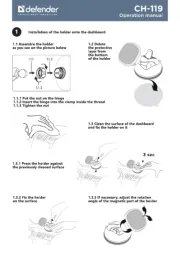
16 September 2025
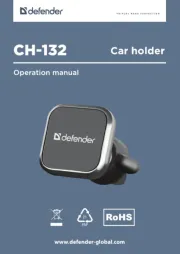
15 September 2025
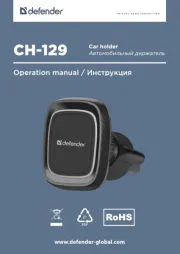
15 September 2025
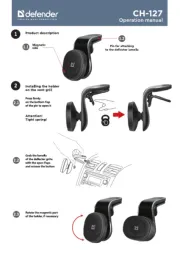
15 September 2025
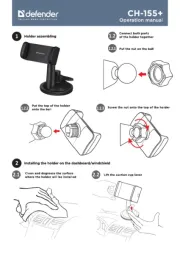
15 September 2025
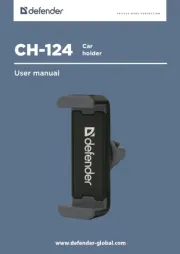
15 September 2025
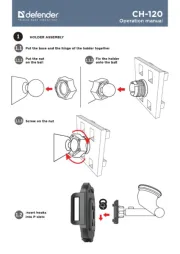
15 September 2025
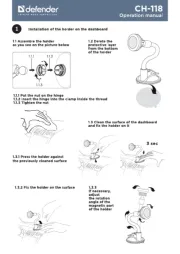
15 September 2025
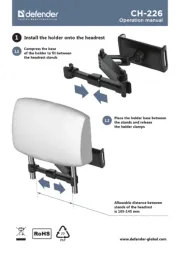
15 September 2025
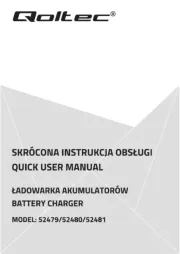
12 September 2025